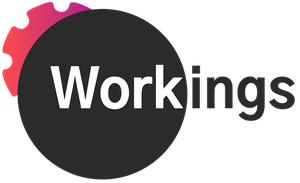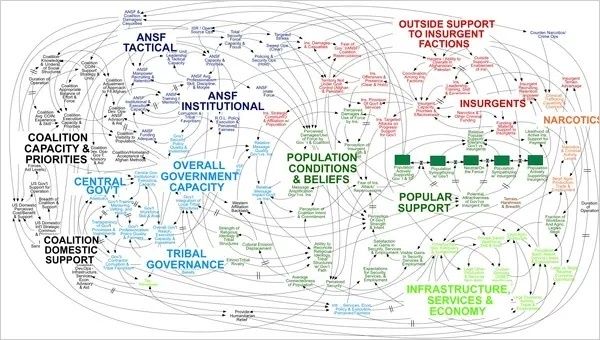My aim was to capture the complexity of the RTO (return to office) movement and, for a few feverish hours, my Actual Plan for Today (::facepalm::) was to share my hand-drawn (!) diagram (!) with all of you as installment #2 of this series. Then I remembered I owned a content company and that distributing terrible content—an image that was illegible, confusing, crowded, and yet still incomplete!—was, as they say, not on brand.
Instead, here in ten points—because I think we all know that artificial constraints are a blessing!—is at least some of what I hoped to convey in my Slide from Hell:
—–
1. The RTO push is real. Enterprise tech can be a weird bubble, wherein remote work seems universal. But the fact is that only 16% of companies are fully remote, and recent months have seen the RTO movement gaining momentum. Just last week, Goldman Sachs threw down by reinforcing a five-days-a-week requirement.
2. The RTO backlash is understandable. Employees bristling at RTO mandates, particularly when they were led to expect that they could remain remote, are not in my view acting “entitled”—a word that makes me cringe, especially when it’s applied to people who are simply advocating for themselves. Just as an employer might be upset if an employee unilaterally changed the terms of their engagement, employees get to object if they don’t like the shifts they’re seeing.
3. I don’t think all of the driving forces behind the RTO movement are being adequately discussed. In communications to employees justifying RTO mandates, the focus tends to be on connection and culture. Please feel free to send me a tinfoil hat if you think I’m way off base, but I have to think that existing commitments to large office spaces, the interests of the commercial real estate industry, and concerns about the vitality of urban centers are also factors playing at least some role in the RTO push. I think it’s probably also astute—not cynical—to observe that some large employers are using RTO to streamline their ranks without having to do (additional) layoffs.
4. Greater transparency regarding these factors matters because not discussing the full picture prevents a clear-eyed assessment of remote work and remote workers. As it stands, many RTO advocates are making it sound like remote work only made sense as a pandemic-era bandaid, when in fact companies like Steyer, and the kinds of skilled professionals we employ, have been operating remotely—and successfully—for decades.
5. A more clear-eyed assessment of remote work would take into account the vastly different histories, needs, and track records of different companies—and different people. Not every type of work lends itself to remote, and not everyone thrives in a remote workplace. But again: Steyer is living proof, among many similar examples, that remote businesses can do well. And arguably more importantly, such businesses can do good: there’s ample evidence, at Steyer and beyond, that remote has played, and can continue to play, a meaningful role in addressing the underrepresentation of historically marginalized people on corporate teams, in leadership roles, and in terms of earning capacity.
6. A more clear-eyed assessment would also (brace yourself, remote diehards!) acknowledge that remote work does have serious drawbacks. While the RTO messaging I’ve seen from large employers strikes me as incomplete (again, see point #3), I don’t think leaders fretting about connection, professional development, and engagement are talking nonsense. Not at all. In fact, as devoted as I am to remote, I worry pretty much non-stop about every single one of these things. I know from experience that it’s possible for remote colleagues to build enduring bonds and real trust and to grow over time in leaps and bounds: this year I turned over the day-to-day management of Steyer to Katelyn Reilly and Tony Batista, two people with whom I’ve never shared an office. But I also know how much effort, over eight long years, each of us has invested to forge that connection, and I wonder—all the time to be honest!—how best to scale that sort of magic.
7. That said, every model has pros and cons. “Office,” “Remote” and “Hybrid” are not World Wrestling contenders; in examining the strengths and weaknesses of each, there’s no need to declare a winner. I mean: what’s the point? Different strokes for different folks, right?
8. In fact, we should probably stop most broad-brush debates altogether and instead spend our energy on real-life experiments in our real-life workplaces with a view to making incremental improvements. You know how political discussions too often fall into the vortex of Whataboutism? Where instead of seriously addressing a legitimate concern, the response is simply to counter with a different concern? This same fruitless dynamic is happening in workplace discussions, and it’s distracting everyone from the task at hand, which in my view is to use new information to design better and better workplaces of all kinds.
9. Figuring out how to structure a team that is economically sustainable, inclusive, healthy, happy, and cohesive is wicked hard and deeply situation-specific. As I’ve said before, I think it’s impossible to know from the outside what would work best at any given company, so as we continue this exploration, I plan—in collaboration with my 115+ colleagues—to “keep my eyes on my own paper,” focusing primarily on the question of what’s right for Steyer.
10. Speaking of what’s right for Steyer: I’m kicking around the notion that we’ve been thinking of the term “hybrid” too narrowly. In the wider world, the term typically refers to every employee, who hasn’t been granted an exception, splitting their work time between an office and remote. But what if we thought about hybrid in terms of our overall workforce? With many people (especially those for whom it’s working beautifully) remaining fully remote and a handful of others (maybe in-house/back office peeps, especially sales and recruiting) shifting things around a bit to systematically spend more time together? I’m no longer the decider, but in my role as spitball launcher from the back of the classroom, that’s possibly something for Team Steyer to ponder as one option among many.
This post does not go up to eleven, so I’ll stop there for now. Today, I felt compelled to share the contents of my noisy head, but when you hear from me again in two weeks, I plan to share (with permission) some of the very thoughtful messages I’ve received from many of you. Between now and then, please keep the comments coming. It’s wonderful to be thinking through all these issues in such good company.
Thanks for reading,
Kate
Slide by PA Consulting Group


 Hello from Steyer!
Hello from Steyer!